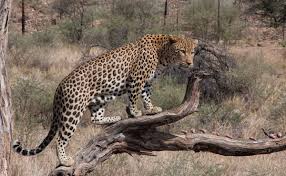After 2 leopard deaths, Goa forest department writes to Wildlife Institute of India for some help

Panaji, Goa — Two recent leopard deaths in North Goa have raised serious concerns among wildlife authorities. In response, the Goa Forest Department has contacted the Wildlife Institute of India (WII) for help. Officials aim to investigate the causes and prevent further loss.
The deaths happened in quick succession and under suspicious circumstances. One leopard was found near Pernem, and another near Sattari. Both incidents occurred close to forest edges near human settlements.
Officials Suspect Poisoning and Trauma
In the Pernem case, villagers found a young male leopard dead near the forest boundary. Forest officers rushed to the scene and did not see any visible injuries. They suspect poisoning. In the Sattari case, another leopard was found with signs of internal injury. It may have died due to a road accident or a fight with another animal.
Forest officials collected the carcasses and sent them for post-mortem. They also ordered toxicology reports to confirm the cause of death. However, Goa lacks advanced forensic labs for wildlife. This limitation led the department to seek assistance from the Wildlife Institute of India.
Forest Department Requests Expert Support
Rajiv Kumar, Goa’s Principal Chief Conservator of Forests, said WII’s involvement would strengthen the investigation. “Their team can guide us with better techniques like camera trapping and forensic study,” he noted.
The Forest Department has formally asked WII to send a team. Their request includes support for tracking leopard movements, analyzing habitats, and suggesting preventive steps.
Conflict Between Humans and Leopards is Rising
Leopards often enter villages in search of food and water. Such visits create fear and sometimes lead to violent reactions. Experts believe that shrinking forests and growing human settlements are forcing leopards closer to people.
“Goa’s forest patches are shrinking due to roadwork, housing, and tourism projects,” said Dr. Anjali Desai, a wildlife researcher based in Panaji. “Animals lose their way and end up in villages.”
Many leopards use forest edges as movement corridors. But these paths now face more disturbances. Roads cut across habitats. Loud noise, garbage, and livestock attract predators. These changes increase the chance of conflict.
Forest Department Plans Local Awareness Drives
The department now plans to educate people in villages near forest zones. Officers will teach safe livestock practices, proper waste disposal, and peaceful response methods during leopard sightings.
Officials also plan to install more camera traps to monitor leopard activity. They hope to identify patterns that show how and when animals enter villages.
Environmental activists welcome this step. “People need to learn how to coexist with wildlife. Killing or scaring animals is not the solution,” said conservationist Vivek Shirodkar.
Call for Wildlife Corridors and Smarter Planning
Experts also urge the government to protect wildlife corridors. These natural paths allow animals to travel safely between forest areas. Cutting down these routes forces animals into human spaces.
“We need eco-sensitive planning. Roads, buildings, and resorts should not block animal movement,” Dr. Desai emphasized. “We also need buffer zones between forests and villages.”
Currently, many tourist projects have been approved close to known wildlife habitats. Some roads pass through forest patches without speed limits or warning signs. Activists want stricter regulations.
WII to Support Goa with Scientific Solutions
WII is expected to send a team of experts soon. They will examine the forest health, track leopard behavior, and suggest protection strategies.
A senior WII official said, “We will help Goa adopt science-based wildlife management. Our goal is to protect both leopards and the people living near them.”
The Forest Department has already started boosting patrolling in high-risk zones. They also plan to adopt a formal Leopard Monitoring Protocol with WII’s support.
A Warning Sign for Goa’s Wildlife Policy
These leopard deaths act as a wake-up call. Goa’s forests may look green, but they face silent threats. Unplanned growth, weak enforcement, and lack of awareness are endangering wildlife.
“Losing a leopard is not just a species loss—it’s an ecosystem warning,” said Kumar. “We must act now.”
The state hopes that with expert help and community support, it can prevent more such tragedies. Protecting wildlife is not just the government’s job—it’s a shared responsibility.






